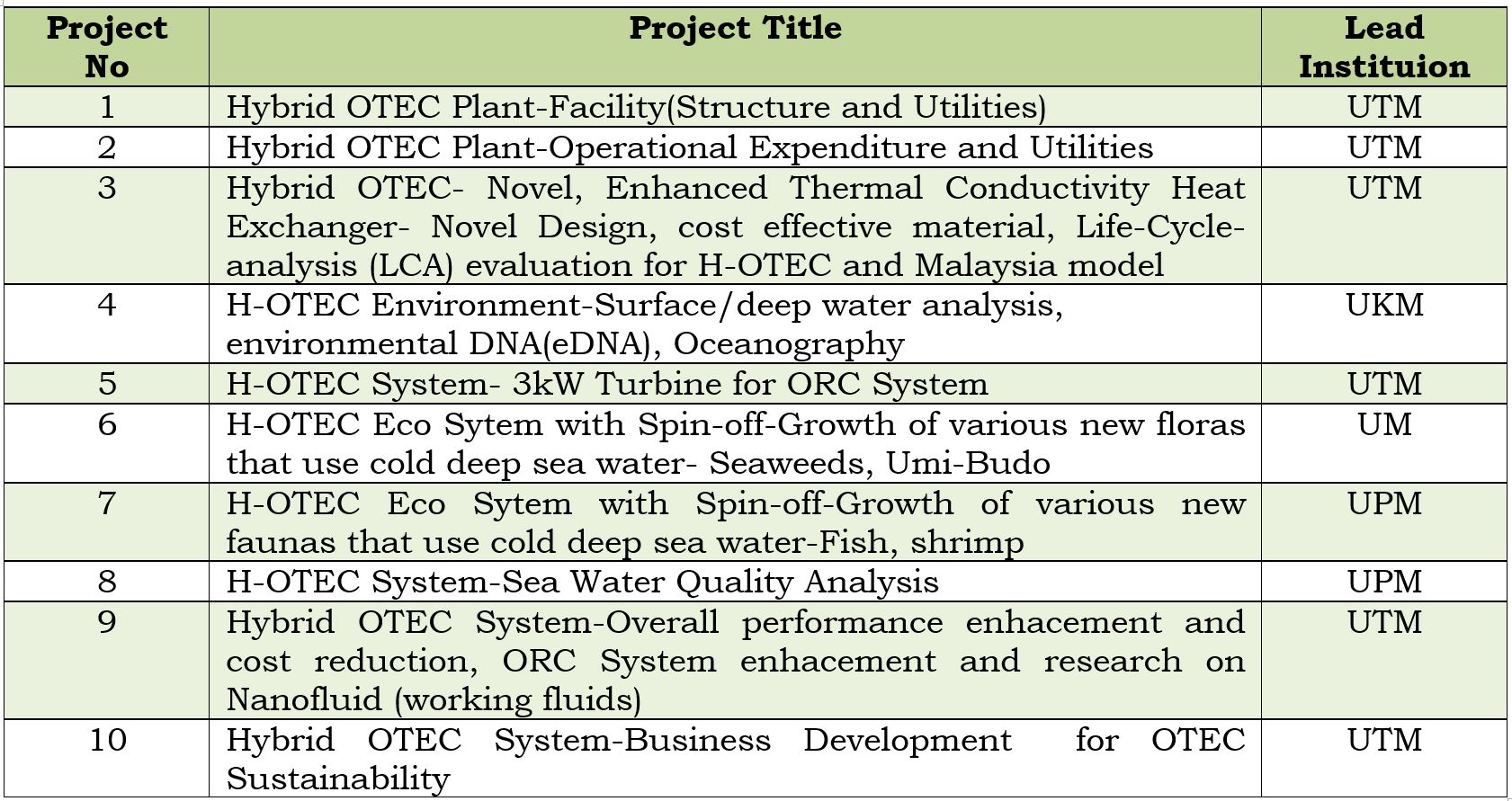Ocean Thermal Energy Conversion (OTEC)
“The most abundant form of energy on Earth is heat; it is about 70% of all energy forms, and most of which, is stored in the upper layers of deep oceans across the equatorial regions. The heat contained therein could be extracted and converted into electric power, or if not, hydrogen fuel. Hydrogen will be fast becoming the most dominant energy carrier by the middle of this 21st Century. Other energy carriers including electricity, oil, natural gas, and coal will be less significant. In Malaysia, it has been established that ocean thermal energy has the potential capacity over 22,000 MW. Such potential has been realised in Kumejima, Okinawa, Japan; and in Hawaii, USA. The Korean Research Institute of Shipping and Ocean Engineering (KRISO) has just commissioned, in late September 2019, a 1-MW Ocean Thermal Energy Conversion (OTEC) plant which will be installed in Kiribati. A 10-MW OTEC plant has been designed for the Martinique Territory of France in the Caribbean. In short, OTEC technology, considered one of the 21 most impactful emerging technologies in this Century, is the only energy conversion technology that generates, not only competitive pricing of energy, but also highly beneficial mineral water and high value marine produce, sea foods, and marine products.”
Prof. Dato’ Ir. Dr. A Bakar Jaafar FASc,
Research Fellow, UTM-Ocean Thermal Energy Centre
What is SATREPS?
“SATREPS is a Japanese government program that promotes international joint research. The program is structured as a collaboration between the Japan Science and Technology Agency (JST)![]() , which provides competitive research funds for science and technology projects , and the Japan Agency for Medical Research and Development(AMED)
, which provides competitive research funds for science and technology projects , and the Japan Agency for Medical Research and Development(AMED)![]()
![]()
![]()
![]()
![]()
![]()
![]()
![]()
Source: https://www.jst.go.jp/global/english/
Research Fields and Areas
※SATREPS projects in the field of Infectious Diseases Control have been transferred to AMED – the Japan Agency for Medical Research and Development![]()
![]()


